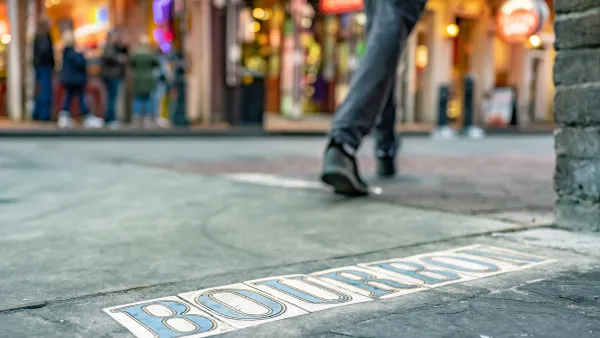With the Super Bowl just around the corner, it's time to reconsider the allegiance of cities to professional sports teams.

Since 1990, taxpayers have been paying more than 60% of the bill for new NFL stadiums and more than 59% for new professional baseball stadiums in the U.S. While professional sports teams are integral to their host cities, the sense of "identity and civic pride" they lend comes "at such a high price, one extracted not by these civic-minded fans, mind you, but by a uniquely undemocratic cabal of mayors and monopolists," writes Harry Moroz.
This year's Super Bowl in New Orleans's rehabbed Superdome comes with a pricetag of $471 million to taxpayers with $41 million of those coming from FEMA.
Several survey-based recent studies show that the value taxpayers place on professional sports team retention in their cities does not match up to the cost of building new stadiums or even renovating existing ones.
What keeps the cycle of dependence going?
"With a limited supply and a more or less credible threat of leaving a city, sports teams are able to appeal to the risk-averse part of city leaders’ brains: People forget about $100 million lost here or there, but the departure of a sports team will be written in a mayor’s obituary."
FULL STORY: URBAN NATION: Money-Wise, Stadiums and Super Bowls Don’t Benefit Cities

National Parks Layoffs Will Cause Communities to Lose Billions
Thousands of essential park workers were laid off this week, just before the busy spring break season.

Retro-silient?: America’s First “Eco-burb,” The Woodlands Turns 50
A master-planned community north of Houston offers lessons on green infrastructure and resilient design, but falls short of its founder’s lofty affordability and walkability goals.

Delivering for America Plan Will Downgrade Mail Service in at Least 49.5 Percent of Zip Codes
Republican and Democrat lawmakers criticize the plan for its disproportionate negative impact on rural communities.

Test News Post 1
This is a summary

Test News Headline 46
Test for the image on the front page.

Balancing Bombs and Butterflies: How the National Guard Protects a Rare Species
The National Guard at Fort Indiantown Gap uses GIS technology and land management strategies to balance military training with conservation efforts, ensuring the survival of the rare eastern regal fritillary butterfly.
Urban Design for Planners 1: Software Tools
This six-course series explores essential urban design concepts using open source software and equips planners with the tools they need to participate fully in the urban design process.
Planning for Universal Design
Learn the tools for implementing Universal Design in planning regulations.
EMC Planning Group, Inc.
Planetizen
Planetizen
Mpact (formerly Rail~Volution)
Great Falls Development Authority, Inc.
HUDs Office of Policy Development and Research
NYU Wagner Graduate School of Public Service



























